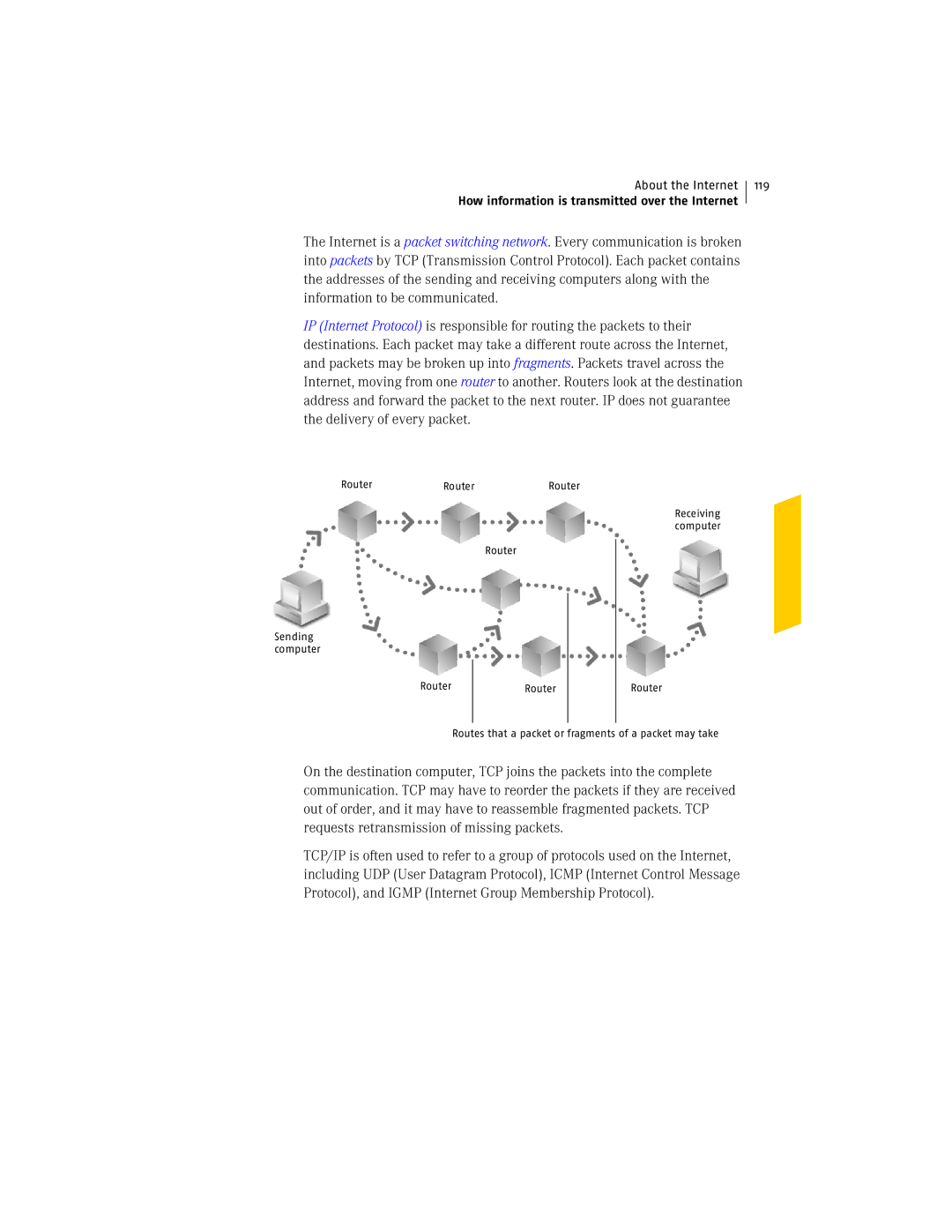
About the Internet
How information is transmitted over the Internet
119
The Internet is a packet switching network. Every communication is broken into packets by TCP (Transmission Control Protocol). Each packet contains the addresses of the sending and receiving computers along with the information to be communicated.
IP (Internet Protocol) is responsible for routing the packets to their destinations. Each packet may take a different route across the Internet, and packets may be broken up into fragments. Packets travel across the Internet, moving from one router to another. Routers look at the destination address and forward the packet to the next router. IP does not guarantee the delivery of every packet.
Router | Router | Router |
Router
Sending computer
Router | Router |
|
|
Receiving computer
Router
Routes that a packet or fragments of a packet may take
On the destination computer, TCP joins the packets into the complete communication. TCP may have to reorder the packets if they are received out of order, and it may have to reassemble fragmented packets. TCP requests retransmission of missing packets.
TCP/IP is often used to refer to a group of protocols used on the Internet, including UDP (User Datagram Protocol), ICMP (Internet Control Message Protocol), and IGMP (Internet Group Membership Protocol).
